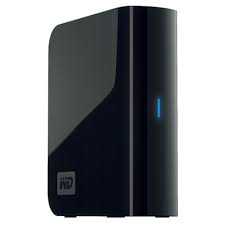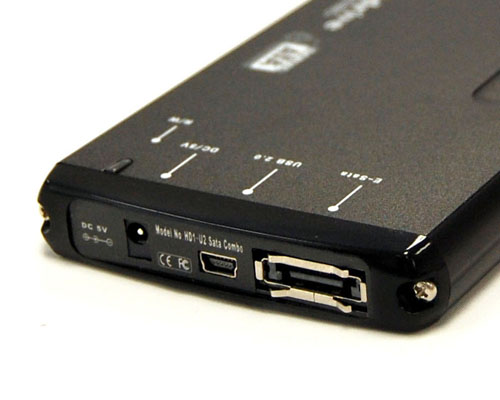runing out of space for ur files on pc,is ur monster 80Gb hard disk is now an ant, so now there is the time to buy a new HD to fulfill ur ever growing needs,so here is a guide!


External Hard Drive Buying GuideWhat is the External Hard Drive?Do you have years of stored image, video, and music files on your desktop PC hard drive? Sharing your files on the go (e.g. when you are at a friend’s house) may be rather difficult if data sizes run in the tens or hundreds of GBs. Reinstalling your hard drive on another PC is an option but is extremely inconvenient, and burning your files to CD or DVD can involve a large number of discs, and searching for specific files afterwards is a nightmare.
The answer: why not consider an external hard drive? It’s the perfect companion for those who travel frequently with large amounts of data. External hard drives offer massive storage capacities and feature convenient connections that allow you to transfer data between it and any computer or other type of storage device. The external hard drive will also act as a storage center or a temporary storage location for data exchanges.
External hard drive characteristicsA wide selection of storage sizes
An external hard drive can contain more than one internal hard drive, resulting in a very wide range of storage size options. The smallest external hard drive provides only one or two GB, and the largest exceeds 1TB (1,000GB according to manufacturer information). Most users should be able to find the capacity they require with ease.
Enhanced data protectionOne of the most important aspects of the external hard drive is its case. It provides additional protection for the internal hard drive(s) and reduces the chance of failure caused by shock. This makes the external hard drive very suitable for mobile applications.
Great connectivity and Hot-plug and playConnecting the external hard drive to a computer is simple as pie. Most external hard drives feature the USB or IEEE 1394 (also known as FireWire) ports for direct connection to the front or rear I/O panels of a computer. External hard drives are hot-pluggable too, meaning you can conveniently attach and use the external hard drive or detach it while your computer is up and running.
Easy data backups The process of backing up your data is typically long and arduous, but fortunately the majority of external hard drives come bundled with backup software and some even provide a handy backup button right on the case. This means that users only need to press that button, and the backup operation is processed automatically according to the preset rules.
Cross platform compatibilityAlmost all external hard drives can be compatible with both the PC and the Mac if the partition is formatted in FAT or FAT32 This means you can exchange data between the PC and Mac platforms conveniently with the help of your external hard drive. This is a very attractive feature for users who are required to use both the PC and the Mac simultaneously.
Key specifications to understandThe main component in the external hard drive is none other than the internal hard drive (or notebook hard drive), thus the key specification of external hard drives are usually very similar to those of internal hard drive or notebook hard drives.
Form factorThe form factor of an external hard drive is determined by the type of hard drive used inside. Since both internal hard drives and notebook hard drives can be used in an external hard drive, the form factor of the external hard drive is roughly determined by the form factor of the hard drive inside, which can be 3.5, 2.5, 1.8, 1 or even 0.85-inch. Obviously, the smaller the form factor, the better its mobility.
CapacityAlmost the full range of internal hard drive storage sizes can be found in external hard drives. As external hard drives may be constructed of two or more internal hard drives, it can offer double or several times the capacity any single internal hard drive. When attached to your computer system, it is recognized as a single hard drive, however.

How to choose the right external hard driveWe are spoilt for choice when it comes to external hard drives as internal hard drives of every size are currently being used in their construction. We can narrow our search requirements down into three basic areas: capacity, performance and mobility. All three are closely related to the hard drive form factor.
Capacity and form factorForm factor is a good indicator of the capacity an external hard drive can provide. For example, a 3.5-inch external hard drive can offer a maximum capacity of over 1TB at present, while a 1-inch product may only provide less than 10 GB. You can refer to the following table for a breakdown:
Form Factor Maximum Capacity
3.5-inch Over 1 TB (currently formed by two or more internal hard drives inside)
2.5-inch 160GB
1.8-inch 80GB
1-inch 12GB
Performance and form factorAs described above, the spindle speed (RPM), cache size and interface type all affect the performance of an external hard drive. Generally speaking, higher spindle speeds, larger cache sizes, higher bandwidth interfaces and higher data transfer rates are all desirable traits as they contribute to higher levels of performance. The relationships among RPM, cache and form factor are listed below:
Mobility and form factorSmaller form factors are always beneficial to mobility. A 1-inch external hard drive may only weigh about 2 oz, while a 3.5-inch product may weigh close to 6 lbs, which is similar to the weight of a mainstream notebook computer.
InterfaceLarge form factor external hard drives (e.g. 3.5-inch) may provide several interface types, which makes it extremely convenient for the user. Small form factor external hard drives (e.g. 1-inch) may only provide one type. In this case it is recommended that you choose the external hard drive with the interface that matches your computer.
SummaryAs we can see, the capacity, performance and mobility of an external hard drive are all inter-related. A 3.5-inch external hard drive may provide extremely large capacities and high performance, but they may not be your best choice for travel. On the contrary, a 1-inch drive is excellent for travel, but the capacity is limited by comparison. When selecting your external hard drive, please find one that best fits your requirements in terms of performance, capacity and mobility.
For example, if you have several hundred GB worth of data that you need to store and share in the office environment, a 3.5-inch external hard drives may be exactly what you need as it can provide the necessary capacity and performance. Although a 3.5-inch external hard drive is relatively heavy, it is still easy enough to move over the short-distances covered in the office.
Conversely, if you often exchange only a few GB of data between your computers at work and home, a 1-inch external hard drive would represent a better choice for its mobility. It also has sufficient capacity for the job. Essentially, the right external hard drive for you is based solely on your personal requirements.